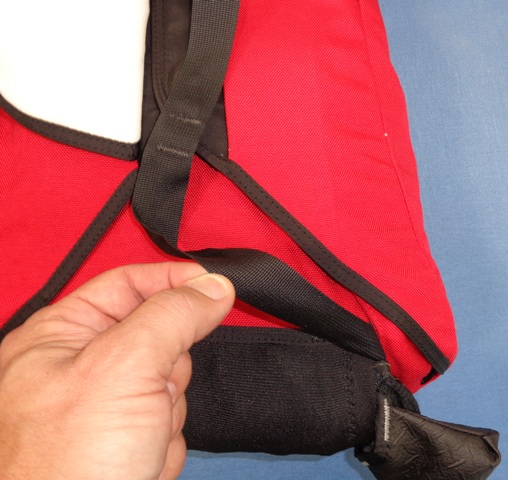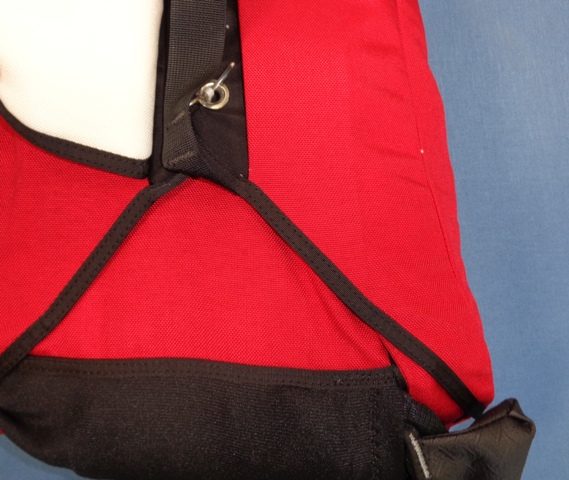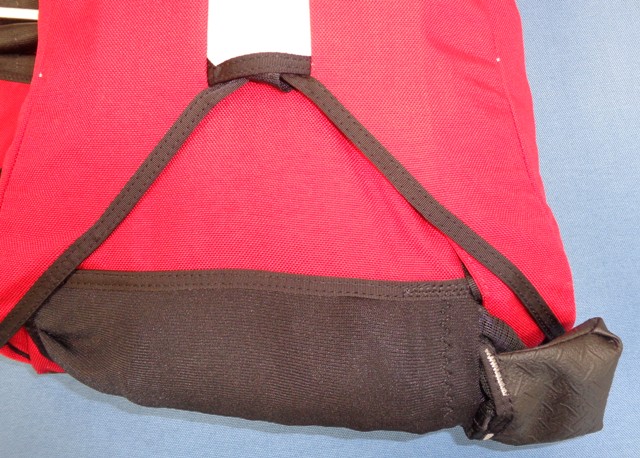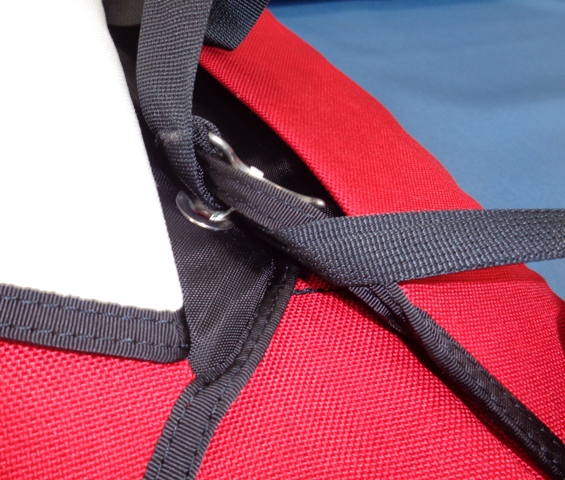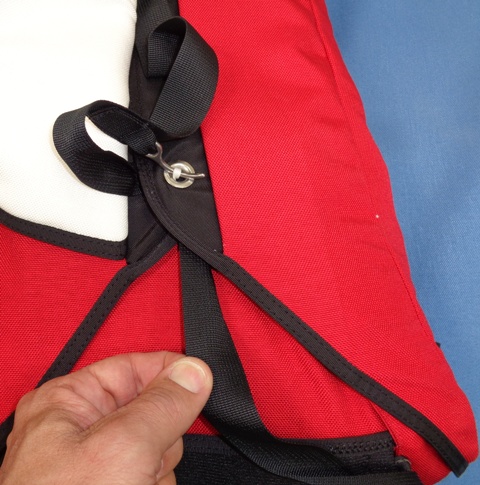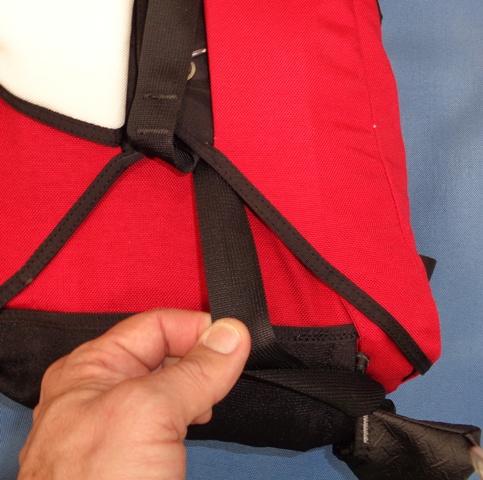It’s the start of your countdown. Do you know where your bridle is?
Most of us are very sure we do. A fatal incident at last year’s Heliboogie, however, brought that into very serious question under a specific set of circumstances. Let’s talk about what happened there, so we can make sure it never, ever happens again.At this point in your BASE career, you know how to route a bridle–but let’s take a look at the steps together regardless:
For these purposes, it’s the last couple of photos that we’re most concerned with, as it’s this part of the process that caused the fatality: the last pin closure and the tucking of the bridle up into its ready position well out of the airflow.
This incident was, as most all BASE incidents are revealed by investigation to be, multi-factorial. We have pieced together what happened from the recollections of the jumpers on site and post-mortem inspection of the gear. The story of the fatality is very similar to hundreds of other exit point stories that happen every season. Only a couple of details changed to turn this from a “pretty normal jump” to the last day of this BASE jumper’s life–and those details were very easy to miss. Here’s what we know about what happened (and what we can reliably surmise).
The jumper and his friends arrived at the exit point. He kitted up into his wingsuit and rig. He asked a buddy to do a quick pre-exit gear check. When the buddy took a quick look at the back side, he noticed that the jumper’s bottom pin had been pulled. The jumper asked his buddy to close it for him so he wouldn’t have to gear down. The buddy respectfully refused, saying that he’d prefer that the jumper reclose the rig himself; that he was not familiar with the rig in question. The jumper took off his rig and wingsuit, put the rig on the ground and enlisted his friends to help him find a pull-up cord. None of the group were carrying one, so they ended up fashioning a pull-up cord out of a boogie bracelet. The jumper closed his rig, importantly without removing his pilot chute.
According to eyewitnesses, the jumper appeared to feel under pressure to move quickly. While we can’t know his thoughts at the moment, there are some likely reasons for his sense of rush: the time constraints of the heliboogie; the frustration of something going wrong and getting in the way of an uneventful jump; the desire not to slow down his friends.
In any event, the jumper geared back up into his wingsuit and rig after the bottom pin was closed. He exited. When he threw out the pilot chute, there was a pin lock. The jumper impacted at high speed with nothing out, and he died.
Apex’s Todd Shoebotham was at the Heliboogie when the incident occurred. As news of the fatality spread, several jumpers responded in a way that is normal when such an event occurs, asking how the pin lock could have escaped the notice of a jumper who had more than 200 BASE jumps.
“They were upset, and they were asking me ‘How does this happen,’” Todd explains. “So I grabbed a nearby rig that was similar to the one involved. I kept talking to the jumpers around me while I intentionally misrouted the bridle. Half the people watching didn’t see it. The other half were, like, how could you miss what he just did?! So I did it again and again and again. Must have been 20 times, that night.”
“The more I did it,” he continues, “The quicker and better I got at covering it up. It seems really silly, but it can happen pretty easily when you don’t take the pilot chute out of the BOC when you re-close.”
The take-away lesson is this: Once the pilot chute is in the pouch, we’re very used to having the bridle tucked nicely up inside–as we should be. But when you keep that same mentality in closing the bottom pin after it’s been popped, it’s very easy for a botched configuration to look exactly like a safe, proper bridle routing. A quick pin check won’t reveal it. When the pin has come out, the pilot chute must come out too.
Todd clarifies. “If you haven’t had to mess with your rig since the packing area, and nothing has changed, then you don’t want someone to pull the bridle out,” he explains. “But if any of that routine changes–if you have to re-close or re-configure in any way–then you have to make sure you take the bridle out to double-check it. Try to make sure a buddy sees it, too. It’s gonna suck to take the extra time, but it is your life.”
If you have any questions about bridle routing–or any other BASE safety issue–please don’t hesitate to contact us. We’re here to help.

